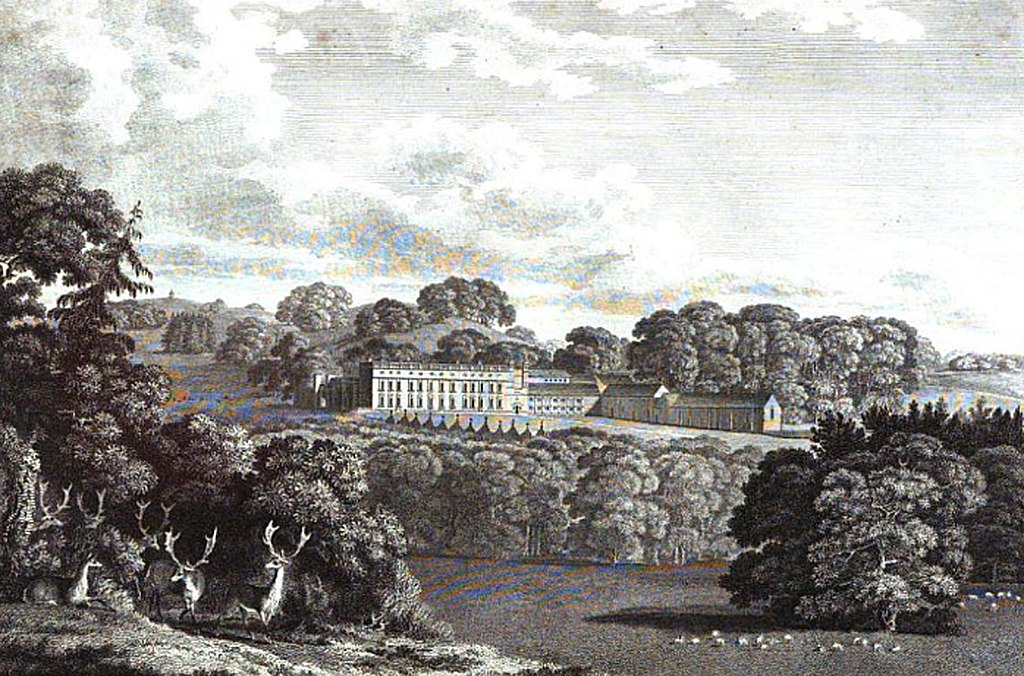
West of Bristol in North Somerset, the original Ashton Court was constructed in the 11th century. Between the 16th and 20th Centuries, Ashton Court was owned by the Smyth family and modified by every generation. In the Regency era, Sir John Smyth remodeled the house. A bachelor, and the last resident of Ashton Court, he devoted much of his attention to his horses, enlarging the stables.
The Smyth money, at least the previous Sir John (Hugh) Smyth came largely from the slave trade. Sir John Hugh was the director of the Bristol Brass Company and married sugar plantation heiress Elizabeth Woolnough. There was also money from nearby coal mines and tenant farmers. There is some thought the family connection to the slave trade dated to the 16th century (Summary of Individual | Legacies of British Slavery (ucl.ac.uk)).
Much of the Regency era Ashton Court edifice has been erected and improved by the famous Inigo Jones.
The Beauties of England and Wales (1813)
The village was known for its “vast” production of strawberries and raspberries. The nearby Long Ashton was popular as a summer resort (The Scientific Tourist, 1818).
Upon Sir John’s death, arose a significant scandal:
Handbook for Travellers in Wiltshire, Dorsetshire, and Somersetshire (1882).
There was a trial, with some booklets on the case available on Google Books for those interested in reading more about the scandal:
The organization the Friends of Ashton Court Mansion have an incredible repository of information on Ashton Court, including maps and plans, timelines of the history, and a look at the servants and influential women of Ashton Court’s history.









